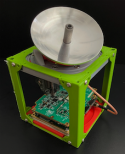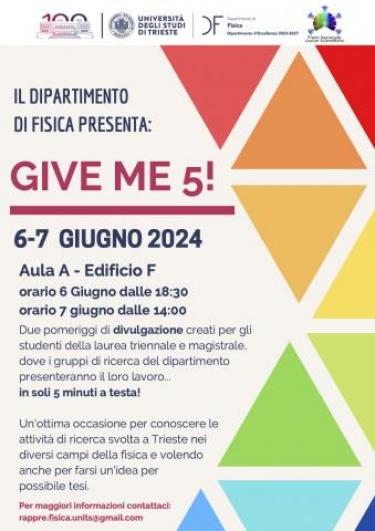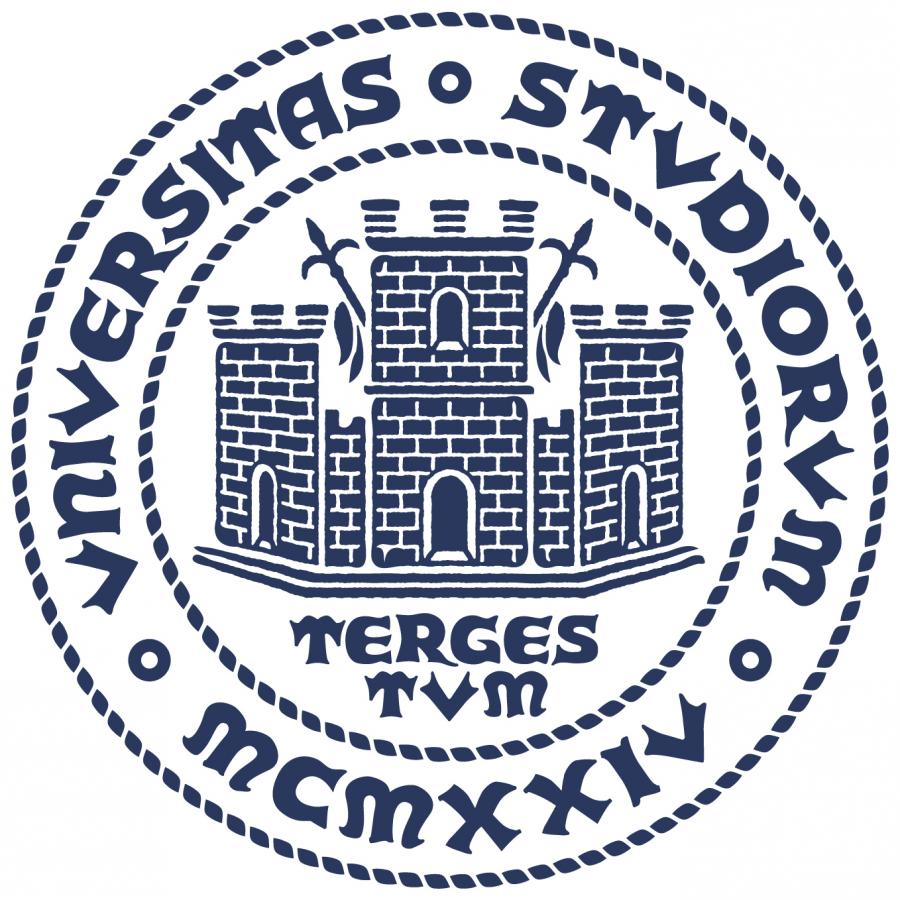- Home
- Dipartimento
- Ricerca
- Didattica
- Post Lauream
- Trasferimento della conoscenza
- Come fare per
Seminari Conferenze e Forum
Alcuni degli eventi organizzati da docenti del Dipartimento di Fisica per studenti e persone interessate.
2025
From Earth to Orbit: costruire la futura generazione spaziale
Una space education per le scuole superiori, ideata dal MIT e dall'Università di Trieste
 Progetto congiunto tra il Massachusetts Institute of Technology (M.I.T.) di Cambridge (U.S.A.) e il Dipartimento di Fisica dell’Università di Trieste (UniTs) che vede la collaborazione di un gruppo misto di studenti e studentesse dei due atenei, con la guida di docenti nel campo spaziale e della didattica STEM (science, technology, engineering and mathematics), cimentarsi nella preparazione di una missione spaziale di osservazione della Terra basata su piccoli satelliti.
Progetto congiunto tra il Massachusetts Institute of Technology (M.I.T.) di Cambridge (U.S.A.) e il Dipartimento di Fisica dell’Università di Trieste (UniTs) che vede la collaborazione di un gruppo misto di studenti e studentesse dei due atenei, con la guida di docenti nel campo spaziale e della didattica STEM (science, technology, engineering and mathematics), cimentarsi nella preparazione di una missione spaziale di osservazione della Terra basata su piccoli satelliti.
2024
Progetto Stelutis Alpinis - dal 8 giugno al 19 ottobre 2024
 Scopriamo il Cosmo dalle Montagne della Carnia
Scopriamo il Cosmo dalle Montagne della Carnia
Pedagogia astrofisica per una scuola mitica. Un progetto in collaborazione con il Dipartimento di Fisica dell'Università degli Studi di Trieste
"Give me 5!" - Brevi interventi di divulgazione delle attività di ricerca del Dip. di Fisica, 6-7 giugno 2024
Due pomeriggi di divulgazione dedicati agli studenti dove i gruppi di ricerca del Dipartimento presentano il loro lavoro in brevi interventi da 5' ciascuno.

Ciclo di seminari: "A set of quasi-easy lectures on quantum materials"
Prof. Fulvio Pamigiani - dal 14 marzo al 4 aprile 2024
The condensed matter physics of the present days and its future scenarios has its roots in issues that emerged in the years between the two world wars of the last century when a long file of unsolved mysteries. The main problems involved magnetism, transport properties and superconductivity.
If we are looking for a definition of quantum materials in a condensation of a few words or adjectives probably we can limit ourselves to all materials whose macroscopic properties cannot be derive in the frame of semi-classical particles and low-level quantum-mechanics. These are materials that present strong electronic correlations or an electronic order, i.e. magnetic or superconducting orders, or materials whose electronic properties have topological constrains or band structure anomalies like Dirac-electron systems (graphene and topological insulators) or systems whose collective properties are governed by quantum behavior. The fingerprints that qualify a quantum material, are some material properties with no counterpart in the classical or semi-classical physical world, such as the quantum entanglement, quantum fluctuations, boundary states that dependent on the topology of the electronic states etc. In these last two decades the study and research of quantum materials has proved to be a subject that not only revolutionized the very idea of condensed matter physics. Nowadays we can envision a scenario beyond traditional quantum materials such as unconventional superconductors, heavy fermions, and multiferroics, where these properties can arise along with mathematical and quantum mechanical fundamental behavior such as topology and entangled quantum states. This landscape comprises, topological quantum matter, low-dimensional materials, van der Waals heterostructures, Majorana fermions materials etc..
In this set of Lectures, we aim to introduce the students to this fascinating and largely unexplored world having in mind that all what is possible to do is not more than a snapshot of the history, concepts, theory models and experiments at the origin of the most recent developments in the field of quantum materials. Although, the topic is very challenging both conceptually and formally theoretically every effort will be made to illustrate the physics of quantum materials especially from the phenomenological point of view.
The intent is to open a door to this universe that in so many ways represents an important part of future physics. It would already be an achievement if the student would find himself at the end of these lectures with a wealth of questions and curiosities that are worth investigating if not exploring.
The roadmap for the lectures is the following:
If we are looking for a definition of quantum materials in a condensation of a few words or adjectives probably we can limit ourselves to all materials whose macroscopic properties cannot be derive in the frame of semi-classical particles and low-level quantum-mechanics. These are materials that present strong electronic correlations or an electronic order, i.e. magnetic or superconducting orders, or materials whose electronic properties have topological constrains or band structure anomalies like Dirac-electron systems (graphene and topological insulators) or systems whose collective properties are governed by quantum behavior. The fingerprints that qualify a quantum material, are some material properties with no counterpart in the classical or semi-classical physical world, such as the quantum entanglement, quantum fluctuations, boundary states that dependent on the topology of the electronic states etc. In these last two decades the study and research of quantum materials has proved to be a subject that not only revolutionized the very idea of condensed matter physics. Nowadays we can envision a scenario beyond traditional quantum materials such as unconventional superconductors, heavy fermions, and multiferroics, where these properties can arise along with mathematical and quantum mechanical fundamental behavior such as topology and entangled quantum states. This landscape comprises, topological quantum matter, low-dimensional materials, van der Waals heterostructures, Majorana fermions materials etc..
In this set of Lectures, we aim to introduce the students to this fascinating and largely unexplored world having in mind that all what is possible to do is not more than a snapshot of the history, concepts, theory models and experiments at the origin of the most recent developments in the field of quantum materials. Although, the topic is very challenging both conceptually and formally theoretically every effort will be made to illustrate the physics of quantum materials especially from the phenomenological point of view.
The intent is to open a door to this universe that in so many ways represents an important part of future physics. It would already be an achievement if the student would find himself at the end of these lectures with a wealth of questions and curiosities that are worth investigating if not exploring.
The roadmap for the lectures is the following:
Lecture 1:
In this lecture we briefly review the past seventy years of development in many-body physics by focalizing the main conceptual and intellectual aspects. Experimental discoveries of remarkable new phenomena, such as superconductivity, superfluidity, anomalous metals, ferromagnetism order and dynamics and the quantized Hall effect will be reviewed following the thread of their historical evolution. Indeed, the history of the field is marked by the most wonderful and unexpected shifts in perspective and understanding that have involved close linkages between experiment, new mathematics and new concepts.
Lecture 2:
In this lecture we will give an overview of the transport properties in materials where the electrical properties are of some materials as determined by many-body effects and other degrees of freedom. We will briefly present the case of Fermi gas, Fermi liquid, Luttinger liquid, strange metals, heavy fermion systems and Kondo systems. In this lecture we will also present the behavior of the mobile electrical charges when an external magnetic or electric field are applied, leading to hall and quantum Hall effect and fractional quantum hall effect and Landau levels.
Lecture 3:
In this lecture we will review the mechanisms that lead to a superconducting state governed by the electron-phonon interactions and those where the conventional theory of the superconductivity fails and known as unconventional superconductors. The main phenomenology, the main experiments and theories will be reviewed while a comparison with other superfluid phenomena will be presented.
Lecture 4:
The basic notion of magnetic phenomena, magnetic order and magnetic materials will be reviewed in order to introduce the quantum oscillatory effects in magnetic materials, such as magnons, skyrmions and magnetic vortex.
The second part of this lecture will be dedicated to topological insulators a newly discovered state of quantum matter. The basic phenomenology behind the physics that governs the electric properties of these materials will be presented along. Interestingly these materials feature a bulk gap and an odd number of relativistic Dirac fermions on their surfaces. While their bulk is insulating, the surfaces can conduct electric current with a well-defined spin texture.
2023
Materiali Biomimetici: 2D or not 2D: Il punto di vista della fisica delle superfici
Prof. Erik Vesselli - 30 marzo 2023
Seminario in fisica delle superfici e materiali biomimetici per nuove generazioni di batterie ricaricabili, pannelli fotovoltaici e di nuovi catalizzatori per la sintesi di vettori energetici
Promotore: Associazione Italiana Studenti di Fisica (AISF) di Trieste
Altri seminari:
- Conferenza annuale IQIS 2023 “Italian Quantum Information Science” Conference - prof. Angelo Bassi (INFN)
- Seminari su fondamenti di meccanica quantistica - prof. Angelo Bassi (INFN)
- Beyond Bones: Applying Innovative Scientific Approaches to Paleontology and Archaeology to Reveal the Secrets of Dietary Habits - Ginevra Lautizi (AMBASCIATA DI FRANCIA IN ITALIA)
- Doctoral School "Fundamental Problems in Quantum Physics" - prof. Angelo Bassi (SILICON VALLEY COMMUNITY FOUNDATION)
- Workshop "Bound states and particle interactions in the 21st century" - Dott.ssa Ramona Lea (EMMI Extreme Matter Institute - GSI HELMHOLTZZENTRUM FUR SCHWERIONENFORSCHUNG GMBH)
2022
Seminario: ’Il decimo anniversario della scoperta del bosone di Higgs al CERN’
Dott. Vieri Candelise - 04 luglio 2022
Dopo una breve introduzione sulla fisica del bosone di Higgs, il seminario ripercorrerà gli anni della scoperta al CERN ad opera degli esperimenti ATLAS e CMS, raccontando com’era il mondo della fisica delle particelle prima di questa storica scoperta e come è cambiato a seguito dello storico annuncio della sua prima rivelazione. Verranno poi evidenziate le direzioni intraprese dalla comunità scientifica a seguito di quello che può essere considerato il più importante risultato sperimentale nel settore delle alte energie degli ultimi decenni, i problemi aperti e i misteri che il bosone di Higgs ancora oggi nasconde.
Ciclo di seminari: "The making of the bomb"
Prof. Fulvio Pamigiani - dal 18 al 26 maggio 2022
The nuclear bombs (also known as atomic bombs) are powerful weapons that use nuclear reactions as their source of explosive energy. Scientists and engineers first developed nuclear weapons technology during World War II in the frame of a project, known as Manhattan Project, fully funded the US Government and directed by J. Robert Oppenheimer and General Leslie Groves.
Atomic bombs have been used only twice in war—both times by the United States against Japan at the end of World War II, in Hiroshima and Nagasaki.
The test, codenamed “Trinity,” took place on July 16, 1945, in the desert at Alamogordo, New Mexico, 200 miles south of Los Alamos. The device, mounted on a metal tower, consisted of just 13.5 pounds of plutonium encased in two-and-a-half tons of explosives. It exploded at 5:29 a.m. to devastating effect, equal to the detonation of almost 20,000 tons of TNT. Groves and Oppenheimer witnessed the atomic fireball expand into a mushroom cloud visible 60 miles away. Horrified by what he saw, Oppenheimer called to mind words from the Bhagavad Gita: “Now I am become Death, the destroyer of worlds.” But it was too late to turn back. The world had entered the nuclear age.
On August 6, the Enola Gay, a B-29 Superfortress, dropped the uranium bomb nicknamed Little Boy, which exploded with the force of 12,500 tons of TNT 1,900 feet above the Japanese city of Hiroshima. With a blinding flash and rising mushroom cloud, the blast and resulting firestorm obliterated the city and destroyed 70,000 buildings. People were vaporized from the blast and their shadows imprinted on walls. President Truman sent public messages announcing the dropping of an atomic bomb and threatened more if Japan refused to surrender. Still, the Japanese government fought on.
On August 9, another B-29 bomber dropped a plutonium bomb called Fat Man on Nagasaki, with an even larger blast equivalent to 22,000 tons of TNT. Due to significant cloud cover this second bomb missed its target by a wide margin, somewhat limiting its destructive impact. Nevertheless, it killed at least 30,000 people and caused suffering for thousands of survivors. Over the next five days, conventional bombings of other major cities killed an additional 15,000 Japanese. Finally, on August 14, Japan surrendered and World War II ended.
A period of nuclear proliferation followed that war, and during the Cold War, the United States and the Soviet Union vied for supremacy in a global nuclear arms race.
Here I will report a short history of the origins and development of the American atomic bomb program during World War II. Beginning with the scientific developments of the pre-war years, the details the role of United States government in conducting a secret, nationwide enterprise that took science from the laboratory and into combat with an entirely new type of weapon.
Galassie, nebulose, comete... con macchina fotografica o cellulare senza telescopio: se conosci i tuoi strumenti ottieni quello che non ti aspetteresti
Prof. Silvio Modesti - 29 aprile 2022
Seminario didattico per gli studenti delle scuole e università
Posso fotografare la struttura a spirale di una galassia distante decine di milioni di anni luce con una normale macchina fotografica (non troppo rudimentale) senza telescopio se conosco un po’ come funziona la macchina, i suoi difetti, come tenerne conto e correggerli. Anche una macchina fotografica o un cellulare è uno strumento di misura, e come ogni strumento fornisce risultati sbagliati ma almeno in parte correggibili. Vedremo quali sono le principali fonti di errore e di rumore quando si fotografa il cielo, e come si possono trattare questi problemi per ottenere foto non banali di nebulose, comete, oggetti dello spazio profondo, o misurare con precisione curve di luce di stelle variabili. E con poca spesa si possono ottenere o costruire dispositivi che migliorano i risultati prodotti dalla vostra macchina o cellulare. Sarà anche una scusa per parlare di o ripassare concetti su errori di misura e analisi dati, indispensabili per qualsiasi disciplina basata su esperimenti e misure.
Altri seminari:
- Seminario "Quantum Magnets on Geometrically Frustrated Lattices and with Strong Spin-Orbit Coupling" - Visiting Professor 2022: Alexander Chernyshev - prof. Federico Becca (Regione FVG)
- Seminario "New frontiers in cosmology" - Visiting Professor 2022: Cristiano Porciani - prof. Pierluigi Monaco (Regione FVG)
2021
Three Minutes Seminars
Incontri del 5 e 19 novembre 2021
Due pomeriggi di divulgazione creati per gli studenti della laurea triennale e magistrale, dove ricercatori e docenti del dipartimento presenteranno il loro lavoro di ricerca... in soli 3 minuti a testa!
 Un'ottima occasione per conoscere le attivita di ricerca svolta a Trieste nei diversi campi della fisica e volendo anche per farsi un'idea per possibili tesi e tirocini. Gli incontri si sono svolti nell'aula Magna dell'edificio H3 a partire dalle ore 14:00.
Un'ottima occasione per conoscere le attivita di ricerca svolta a Trieste nei diversi campi della fisica e volendo anche per farsi un'idea per possibili tesi e tirocini. Gli incontri si sono svolti nell'aula Magna dell'edificio H3 a partire dalle ore 14:00.
Queste sono le agende degli incontri che raccolgono le presentazioni dei docenti:
05.11.2021: https://agenda.infn.it/event/28889/
19.11.2021: https://agenda.infn.it/event/28890/
Ciclo di seminari - "A short history of the photon"
Prof. Fulvio Parmigiani - dal 5 al 15 ottobre 2021
History of the Photon
“All those 50 years of careful pondering have not brought me closer to the answer to the question: ‘What are light quanta?’ Today any old scamp believes he knows, but he’s deluding himself.”
(A. Einstein in a letter to Michele Besso, 12 Dec. 1951)
Synopsis
A set of four lectures on the foundation and rise of concepts, physics and mathematical formalisms nowadays used to describe the light quanta, an elusive particle with no mass but subject to gravitation effects, as those predicted by the mathematical singularities (black holes) that emerge from the field equations of the general relativity, from which the photon are trapped.
In the FIRST LECTURE I will provide a fresco of the historical and philosophical roots that give rise to the idea of "grains of light". This period will extend from the ancient philosophers to the Newton’s Era.
In the SECOND LECTURE we will immerse ourselves in the crucible where classical physics evolved into quantum physics and the history of the photon will be our guide to review opposing ideas in comparison and ideological clashes between the giants of physics across the XIX and XX centuries.
In the THIRD LECTURE we will review the ideas, the experiments, and the formalisms adopted by a crew of physicists who changed the physics of electromagnetic radiation and probably the physics itself, forever. These people range from Einstein, to Fermi, from Dirac/Heisember to von Neuman, till the crucial Compton scatering experiment. We will explore the history and controversies that laid the foundation for what we now call "quantum optics.”
In the LAST LECTURE, as in the crescendo of a great polyphonic symphony, we will follow, step by step, what today we can define a fundamental mutation of quantum physics born from the head-on collision between two schools of thought on the completeness of quantum mechanics and therefore two ways of understanding physics. What will emerge is a physics bearer of the idea of zero point energy and then the idea of quantum vacuum, explaining the interference and diffraction produced by single particles (massive and massless) violating the principle of space-time superposition so far required to explain these phenomena
Primo Seminario - 5/10/21 - 17:00-18:00 - File PDF
Secondo Seminario - 7/10/21 - 17:00-18:00 - File PDF
Terzo Seminario - 12/10/21 - 17:00-18:00 - File PDF
Quarto Seminario - 15/10/21 - 17:00-18:00 - File PDF
Ultimo aggiornamento: 12-09-2025 - 17:48



